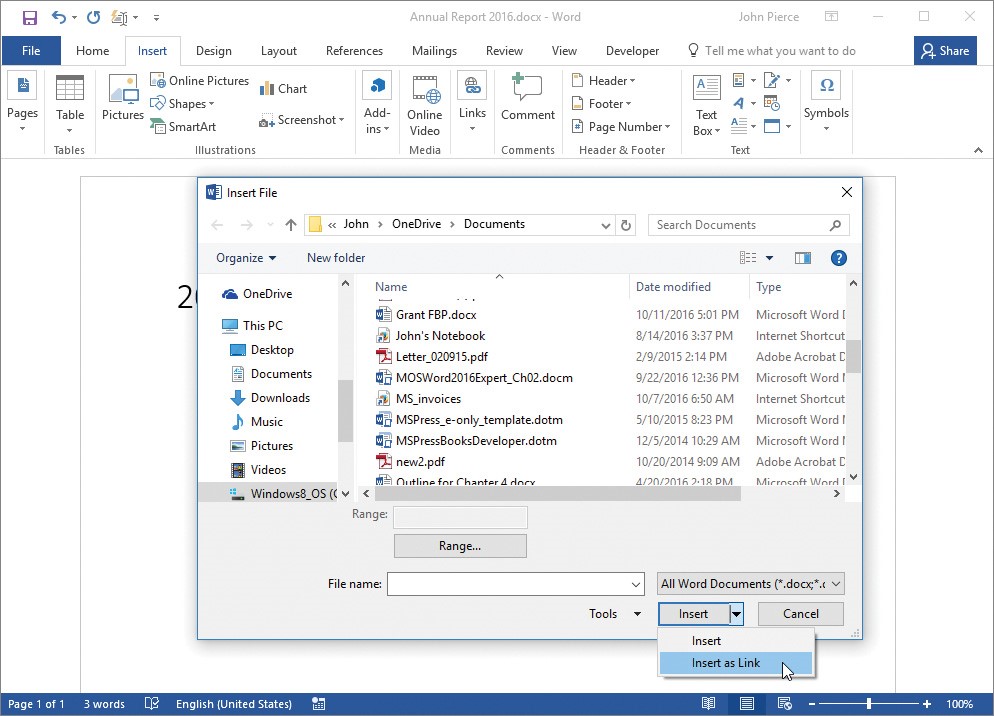Objective 1.1: Manage Documents And Templates
- 1.1.1 Modify existing templates.
- 1.1.2 Copy custom styles, macros, and building blocks to other documents or templates.
- 1.1.3 Manage document versions.
- 1.1.4 Compare and combine multiple documents.
- 1.1.5 Link to external document content.
- 1.1.6 Enable macros in a document.
- 1.1.7 Change default program settings
- 1.1.7a Display hidden ribbon tabs.
- 1.1.7b Change the application default font.
Link to external data
The tasks involved in managing documents can encompass not only working with multiple Word documents but also working with external data or files that you link to from a Word document. You can link to the content in another Word document and to files created in other Office programs or to Adobe Acrobat documents, for example. You can link to the content of the source file, embed the contents of a file, or display the file as an icon. You can also create an object (such as a chart or a slide) to insert in a Word document.
To link to external data, you use either the Object dialog box or the Insert File dialog box. In the Object dialog box, you can create an object by selecting the object type from a list. You can display the object as an icon instead of the full object; then, in the Word document, you can double-click the icon to open the object. By default, Word embeds the content of the file you select in the document. If you select Link To File, Word creates a link to the source file so that updates to the source file are reflected in the Word document. When you link to a file, Word displays an image of the file in the Word document. Double-clicking this image opens the source program.
In the Insert File dialog box, you can select a file to include in the current document. When you select the Insert As Link command to link to the file, Word inserts a field code by using the INCLUDETEXT field. This field creates a dynamic link to the source file so that updates to that file are reflected in the document in which you created the link. Be mindful that the INCLUDETEXT field uses the full path to the file you insert. If you move or rename the file you have linked to and then update the field, Word displays an error message indicating that the field refers to an invalid file name.
To link to external data
1. On the Insert tab, in the Text group, click Object.
2. In the Object dialog box, click the Create from File tab.
3. In the File name box, enter the name of the file you want to link to, or click Browse and then navigate to and select the file.
4. In the Object dialog box, select the Link to file check box, and then click OK.
To link to a file
1. On the Insert tab, in the Text group, open the Object menu and then click Text from File.
2. In the Insert File dialog box, click the file you want to insert.
3. Click the Insert arrow, and then click Insert as Link.

Choose Insert As Link to add a field to a document, linking to the content in the source file